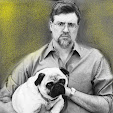 Last Sunday (Memorial Day Weekend), I (and a neighbor and brother-in-law) spent most of the day and some of the evening in the basement of the Portland Art Museum watching the 25th anniversary re-release of the Holocaust documentary (though filmmaker Claude Lanzmann rejects the term "documentary") "Shoah." The total running time was about 9.5 hours.
Last Sunday (Memorial Day Weekend), I (and a neighbor and brother-in-law) spent most of the day and some of the evening in the basement of the Portland Art Museum watching the 25th anniversary re-release of the Holocaust documentary (though filmmaker Claude Lanzmann rejects the term "documentary") "Shoah." The total running time was about 9.5 hours.The length contributes to the impact of the film, to the immersive nature of the experience; I was glad that I saw it all it once (it was screened in two halves, with a 45-minute break between). The film ultimately should be separated from the information that it contains. The facts and figures of the Holocaust go only a very small ways to representing the event.
"Shoah" in part creates its effect by what it is not: Lanzmann makes no attempt to explain political history. Few if any Nazi leaders are named. The film is limited in its scope -- there is no mention of France, none of Scandinavian countries, little of the USSR. There is no historical footage at all -- just interviews (survivors, perpetrators, witnesses) and location shots of Corfu, Polish villages, Warsaw, and extermination camp ruins from when the film was made (over 11 years, footage from 70s and 80s). There are a lot of sinister shots of trains, which provide continuity and transition. There are also shots of lush, bucolic countryside, where millions were killed.
Most of the film focuses on the minute operations and even physical dimensions of the murdering operations at Auschwitz, Chelmno, and Treblinka. There is a small section in Corfu -- a sunny, Mediterranean contrast to Poland. The Corfu Jewish community (of about 1,800) was rounded up in June 1944 (shortly after D-Day) and sent to Auschwitz by ferry, then train. It was, as the film discusses, a logistical challenge, but the train finally made it; only 5% of Corfu's Jewish community survived.
There is also a section about the Warsaw Ghetto, built mostly around interviews with a Polish diplomat and courier, Jan Karski. He spent a few hours over two days visiting the ghetto, seeing bodies on the street and a scene that he described as not human.
But the Corfu and Warsaw parts seem almost like sidebars: the heart of the film is testimony from Jewish survivors who worked at the gas chambers and crematoria. The start of part II of the film includes about 20 minutes of a barber talking (while cutting a man's hair in a Tel Aviv barbershop) about cutting hair of women in the gas chamber a few minutes before they were killed. A Czech Jew named Filip Müller describes one of the Auschwitz gas chambers at length. Two survivors -- the only two -- discuss Chelmno, where 400,000 people were killed in vans in which the exhaust fumes were fed back into the vehicle.
Lanzmann also talks to a couple of Reich bureaucrats as well as a Treblinka guard. At one point, the guard corrects Lanzmann, saying that it is an "exaggeration" to say that as many as 18,000 people could be killed a day at Treblinka. Lanzmann insists that figure is in the court records, but the guard tells Lanzmann that, no, the most they could kill in a day was 12 or 15,000.
Lanzmann also interviews the Reich's assistant commissioner of
 the Warsaw Ghetto; he went on to be a publisher of mountaineering books. At one point, he says something like, "This topic has been discussed at length. We're not going to come to any new conclusions." And Lanzmann agrees, "No, I don't think we will." This is part of the point: to hear people discuss what they witnessed, but not to reach for any containable findings.
the Warsaw Ghetto; he went on to be a publisher of mountaineering books. At one point, he says something like, "This topic has been discussed at length. We're not going to come to any new conclusions." And Lanzmann agrees, "No, I don't think we will." This is part of the point: to hear people discuss what they witnessed, but not to reach for any containable findings.There is a good deal of overlap and repetition -- for instance, where a survivor's testimony is echoed by a perpetrator's testimony (e.g., about the "infirmary" at Treblinka, where older people were treated with a single "pill" -- a bullet to the neck). Lanzmann also continually takes the viewer back to the ruins at Auschwitz, back to Chelmno and Treblinka. The camp ruins function as magnets -- pulling Lanzmann and the viewer obsessively back to a place that must be seen but cannot be explained.
